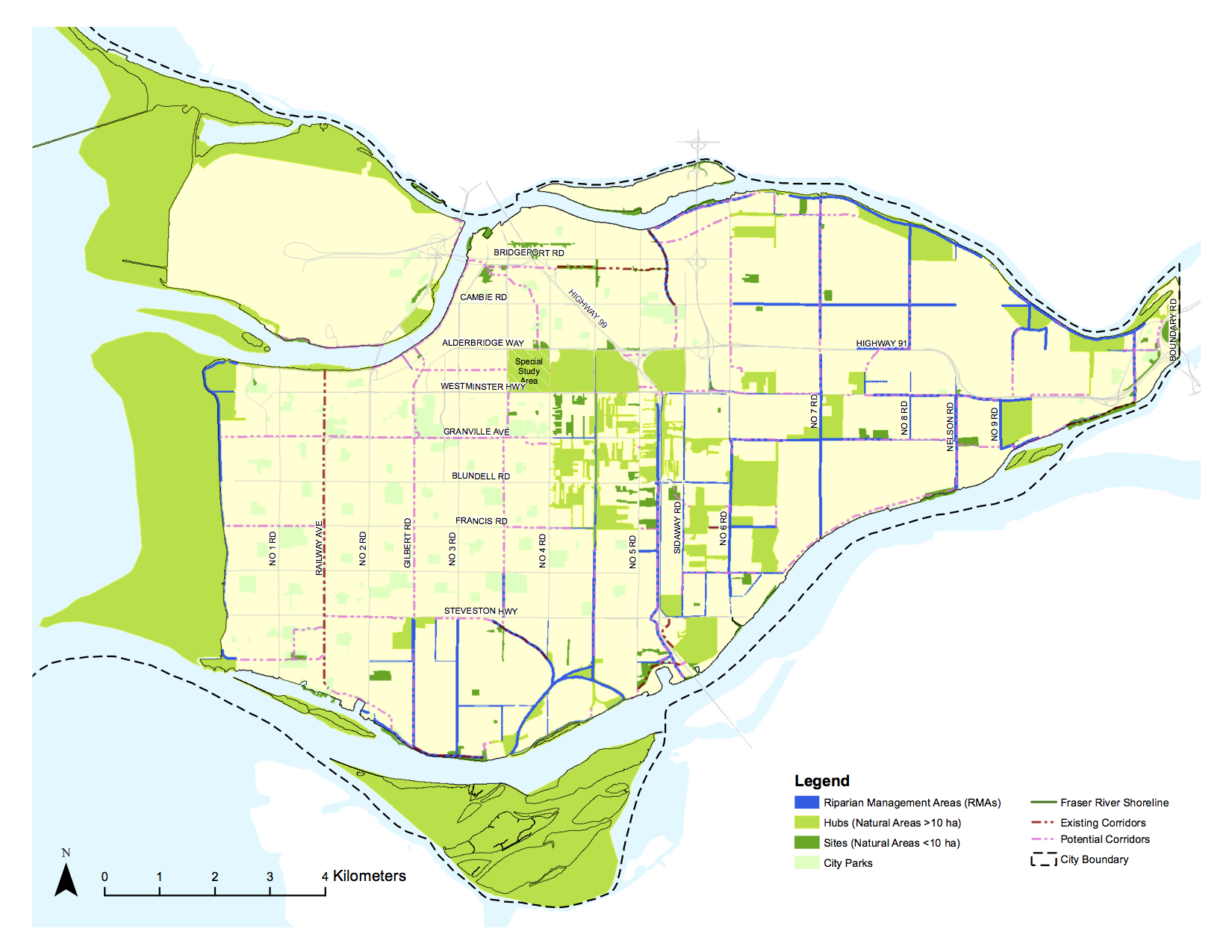The City of Richmond in British Columbia has adopted a new strategy for guiding decisions regarding the city-wide system of natural areas and the ecosystem services they provide on city, public and private lands. The Ecological Network Management Strategy represents the first city-wide environmental strategy for Richmond. It offers a blueprint for ecological enhancement and the establishment of greener infrastructure, including groundwater recharge sites, stormwater ponds, and coastal buffer zones.
“The Ecological Network Management Strategy recognizes that the on-going protection and enhancement of natural areas in the community is a critical step to achieve an ecologically connected and livable community,” said Mayor Malcolm Brodie. “The strategy offers an essential guide to the management of our ecological resources while meeting the needs of a growing City,” he said.
A map identifies the priority sites, shoreline and riparian areas, parks, and corridors that comprise the network of ecological assets in Richmond. The strategy will direct the development of green infrastructure that will improve drainage, water filtration, green space, and wildlife habitat in those areas. It considers the ecological value and function of lands regardless of ownership, including islands, backyards, parks, school yards, fields and meadows. For lands that are not owned by the city, engagement strategies will aim to foster partnerships regarding land management. An example is the work done in partnership with BC Hydro to capitalize on the ecosystem services provided by right-of-way hydro wire corridors.
“Over the course of the coming year, we will be initiating a number of short-term priorities from the strategy, many of which will be supported by community outreach and engagement,” said Brodie.
An example of one of the priority projects that was identified within the strategy is the enhancement of the Bath Slough, one of the last remaining historic waterways in the City of Richmond. Enhancement and restoration activities have been ongoing since 1980, however, the Framework emphasizes the need to re-engage the community towards preserving the slough’s function as a drainage canal, recreation corridor, and in support of fish habitat.
The Strategy seeks to complement, align and inform the current planning and regulatory context in order to strengthen and enhance Richmond’s natural spaces.









